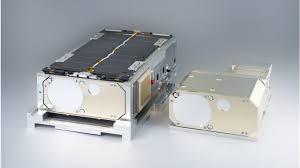
Written by Nick Wood.
The trickle of satellite-capable smartphones looks set to become a flood if MWC is anything to go by.
Heavy machinery maker Cat’s rugged device division announced the S75, a new handset produced by UK-based contract manufacturer Bullitt that includes two-way geostationary satellite comms courtesy of MediaTek’s 3GPP non-terrestrial network (NTN) chipset.
At Mobile World Congress (MWC), US chip maker Qualcomm announced no fewer than six handset makers have agreed to develop products that incorporate its Snapdragon Satellite chip. Introduced at CES in January, Snapdragon Satellite connects to Iridium’s low Earth orbit (LEO) constellation, and supports emergency messaging, SMS and “other messaging applications”, said Qualcomm.
The prospect of offering a device that supports connectivity beyond the range of terrestrial cellular networks seems to have convinced some big names to take a punt. Honor, Motorola, Nothing, OPPO, vivo and Xiaomi are all on board, and while Qualcomm didn’t share a firm timeline for when satellite phones will begin hitting the shelves, January’s CES announcement said products are due to launch in select regions from the second half of this year.
“By incorporating Snapdragon Satellite into next-generation devices, our partners will be able to offer satellite messaging capabilities thanks to a mature and commercially available global LEO constellation, which can allow subscribers around the world to communicate outdoors with emergency service providers, as well as family and friends,” said Francesco Grilli, vice president of product management, Qualcomm Technologies, in a statement.
Satellite-capable smartphones are not the only form factor Qualcomm has its eyes on. It is also keen on getting its products – specifically 5G modules – into PCs, laptops, consoles, handheld gaming devices, and mixed reality (XR) headsets. To that end it also unveiled on Monday three reference designs that integrate the modem, transceivers, and RF front-end into a single, compact board that can fitted to the M.2 expansion slot of a motherboard.
They are the Snapdragon X75, X72 and X35. The first two support sub-6 GHz bands, while the X35 supports RedCap. Also known as NR (new radio) Light, RedCap was introduced in 3GPP Release 17, and offers throughput and power consumption that is greater than low-power NB-IoT, but less than enhanced mobile broadband (eMBB). It is designed to support basic connectivity services for devices like wearables, health monitors, surveillance cameras, IoT gateways, and broadband access for things like tablets and so-on.
“The introduction of M.2 and LGA reference designs further demonstrates our dedication to equipping the ecosystem with our highest performance Modem-RF solutions in the most timely and cost-optimised way to push 5G beyond the smartphone into the next generation of connected smart devices,” said Gautam Sheoran, VP, product management, at Qualcomm. “We’re excited to provide customers with globally certified, premium reference designs to reduce deployment time, lower design complexity, and enable the expansion of 5G into all device categories.”
Then there’s cars. The connected car is slowly but inexorably creeping towards us over the horizon, with every new model promising seamless integration with compelling safety and infotainment services, whether they be a particular automaker’s proprietary offering, Apple CarPlay, or Android Auto.
With research firm Omdia predicting 571 million connected cars on the road by 2025, there is a sizeable addressable market.
Qualcomm has been selling modems and associated tech to the automotive industry for years, and on Monday it launched the latest version of its Snapdragon Auto 5G Modem. It offers a 40 percent power efficiency gain – which is probably important given the growing adoption of EVs – and a more than 2x improvement in throughput. Features include but are not limited to connected vehicle-to-everything (C-V2X) technology, Wi-Fi and satellite connectivity, and an upgraded positioning engine to improve location accuracy for emergency responders.
“As the culmination of Qualcomm Incorporated’s more than 20-year history connecting cars with our telematics or auto connectivity platform, the Snapdragon Auto 5G Modem-RF Gen 2 further harnesses the power of 5G for vehicles to assist automakers in democratising access to smart, connected vehicle experiences,” declared Nakul Duggal, SVP and GM, automotive, at Qualcomm. “5G will continue to unlock the future of automotive and transportation, and we’re proud to accelerate the pace of wireless innovation in these industries.”
Read the original article here









